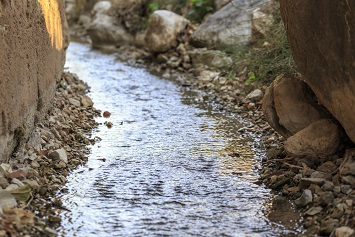In a lengthy interpretive statement, the EPA takes the position that a pollutant discharged from a point source, which reaches a water of the United States via a hydrologic connection provided by groundwater, is not subject to permitting under the Clean Water Act’s (CWA) National Pollutant Discharge Elimination System (NPDES).
The Agency believes the interpretative statement is necessary because the CWA does not explicitly prohibit NPDES jurisdiction over point source releases to groundwater. But based on its “holistic analysis” of the CWA, the Agency states that “Congress intentionally chose to exclude all releases of pollutants to groundwater from the NPDES program, even where pollutants are conveyed to jurisdictional surface waters via groundwater.”
Circuit Split
The EPA’s interpretative statement will not be the federal final word on the topic. Currently there is a split among federal appeals courts over whether the CWA extends to the interaction of point sources, groundwater, and U.S. waters. In 2018, both the 9th Circuit and the 4th Circuit found that if a point source discharges a pollutant that reaches a U.S. water, that discharge is subject to NPDES permitting, whether the discharge is direct or indirect—that is, conveyed to the jurisdictional surface water by way of groundwater. However, also in 2018, the 6th Circuit took the opposing position, stating that the relevant statutory language applied only where pollution has been added directly to navigable waters “by virtue of a point-source conveyance,” rather than through some other mechanism, such as groundwater.
Given the split at the circuit level, in February 2019, the U.S. Supreme Court granted a petition for writ of certiorari for the 9th Circuit case (County of Maui v. Wildlife Fund et al.). The Agency notes that it will not apply the interpretation in either the 9th Circuit or the 4th Circuit, even though it does not believe it is prohibited by law from doing so. The Agency explains that it is simply choosing to maintain the status quo pending further clarification by the Supreme Court, after which time the EPA intends to follow with notice and comment rulemaking.
EPA’s Revised View
The interpretive statement follows up on a February 2018 notice in which the EPA solicited public comment regarding whether the Agency should review and potentially revise or clarify its previous statements concerning the applicability of the CWA NPDES permit program to pollutant releases from point sources that reach jurisdictional surface waters via groundwater that has a direct hydrologic connection to a jurisdictional surface water. The Agency’s critical previous position was contained in an amicus brief submitted at the 9th Circuit’s request in County of Maui. In the brief, the EPA stated that the case is about the regulation of discharges of pollutants to U.S. waters and not about CWA regulation of groundwater. But the EPA now says that this position took insufficient account of the explicit treatment of groundwater under the CWA, as reflected in the statute’s text, structure, and legislative history.
“In the Agency’s [revised] view, releases to groundwater should not be distinguished based on the connection (or lack thereof) between groundwater and jurisdictional surface waters,” the EPA states. “The text, a holistic analysis of the statute, and the legislative history indicate that Congress’s intent was to categorically exclude groundwater from coverage of the permitting provisions of the Act and to leave regulation of groundwater to the states, irrespective of the type of groundwater formation and whether it allows for discharge to jurisdictional surface waters or the directness of such a conveyance.”
Link to WOTUS Rulemaking
The EPA’s request for comments on how it should interpret its NPDES authority prompted 50,000 responses, another indication of how the Agency and the courts see CWA jurisdiction as a subject of intense interest to the public, states, businesses, and other stakeholders. CWA jurisdiction is also at the core of the EPA’s ongoing rulemaking to cast a new definition of Waters of the United States (WOTUS).
Those opposed to the direct hydrologic connection theory raised concerns regarding activities that might be impacted if a NPDES permit is required for a release to groundwater with a direct hydrologic connection to jurisdictional surface water. Those activities include aquifer recharge, leaks from sewage collection systems, septic system discharges, treatment systems such as constructed wetlands, spills and accidental releases, manure management, and coal ash impoundment seepage. The EPA says these commenters also raised implementation concerns, including how a direct hydrologic connection would be defined and where monitoring or the point of compliance would be determined.
Commenters who supported the direct hydrologic connection theory noted instances of environmental harm to jurisdictional surface waters that resulted from releases to groundwater with a direct hydrologic connection to those waters. These commenters asserted that the CWA’s goal of protecting surface waters encompasses releases to groundwater that could reach U.S. waters and that groundwater itself does not need to be jurisdictional under the CWA to regulate discharges that pass through groundwater and ultimately may reach surface water.
Other Authorities
The interpretive statement includes a discussion of state programs that regulate discharges to groundwater, as well as federal authority to protect groundwater as provided in the Safe Drinking Water Act; the Resource Conservation and Recovery Act; and the Comprehensive Environmental Response, Compensation, and Liability Act.
“There is sufficient legal authority to address releases of pollutants to groundwater that subsequently reach jurisdictional surface waters at both the state and federal level without expanding the CWA’s regulatory reach beyond what Congress envisioned,” the EPA says.

